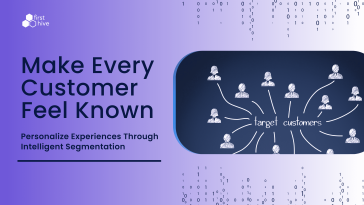As organizations embark on their digital transformation journeys, one concept has emerged as a game-changer: Customer 360. This powerful approach enables businesses to gain a comprehensive view of their customers, driving personalized experiences and fueling growth. In this blog post, we’ll explore the concept of Customer 360, its role in digital transformation, and how it can revolutionize your business.
Understanding Customer 360
Customer 360 is an application of data that enables organizations to create a shared view of their customers across departments and touchpoints. It goes beyond traditional CRM systems by consolidating data from various sources, including interactions, transactions, and inferred attributes. By integrating and analyzing this data, businesses can gain valuable insights into customer behavior, preferences, and needs.
Benefits of Customer 360
The benefits of implementing Customer 360 are vast and can have a profound impact on your business. Here are some key advantages:
- Personalized Customer Experiences: With a 360-degree view of your customers, you can deliver highly personalized experiences at every touchpoint. By understanding their preferences, needs, and behavior, you can tailor your offerings and communications to meet their specific expectations.
- Improved Customer Satisfaction: By providing personalized experiences and addressing customer needs proactively, you can significantly enhance customer satisfaction and loyalty. Satisfied customers are more likely to become advocates for your brand and recommend your products or services to others.
- Enhanced Cross-Selling and Upselling: With a comprehensive view of customer data, you can identify opportunities for cross-selling and upselling. By understanding their purchase history, preferences, and needs, you can recommend relevant products or services that align with their interests, increasing revenue and customer lifetime value.
- Efficient Customer Service: Customer 360 enables your customer service teams to access relevant customer information in real-time. This empowers them to provide faster and more personalized support, resolving issues promptly and leaving customers with a positive impression of your brand.
Digital Transformation and Customer 360
Customer 360 plays a critical role in driving digital transformation initiatives. As businesses strive to become more customer-centric and agile, they need a holistic view of their customers to inform their decision-making processes and strategy.
By implementing Customer 360, organizations can break down data silos and create a unified, single source of truth for customer information. This not only improves operational efficiency but also enables businesses to make data-driven decisions and drive innovation.
The Role of IT in Digital Transformations through Customer 360
IT plays a crucial role in enabling digital transformations through Customer 360. Here are some key aspects:
- Data Integration: IT teams are responsible for integrating data from various sources and systems to create a unified view of the customer. This involves connecting disparate applications, breaking down data silos, and ensuring data quality and integrity.
- Infrastructure and Security: IT teams are responsible for establishing the necessary infrastructure and security measures to support the implementation of Customer 360. This includes data storage, network connectivity, and implementing robust security protocols to protect customer data.
- Integration Challenges: IT teams must overcome integration challenges, such as slow integrations, lack of reusability and scale, and limited IT resources. By leveraging integration solutions and best practices, IT teams can streamline the integration process and accelerate digital transformations.
Solving Integration Challenges for Customer 360
While integration challenges may arise during the implementation of Customer 360, there are ways to overcome them. Here are some strategies:
- Embrace Integration Platforms: Integration platforms, such as iPaaS (Integration Platform as a Service), provide pre-built connectors and tools to simplify the integration process. By leveraging these platforms, IT teams can accelerate integrations and reduce development time.
- Automation: Automating integration processes can significantly speed up integrations and reduce manual effort. By automating data mapping, transformation, and synchronization, IT teams can achieve faster and more efficient integrations.
- Collaboration and Communication: Effective collaboration and communication between IT teams, business stakeholders, and external partners are crucial for successful integration. Regular meetings, clear documentation, and shared understanding of integration requirements can help overcome challenges and ensure a smooth implementation.
The Takeaway: IT Leading Digital Transformations with Customer 360
In conclusion, Customer 360 is a powerful concept that can revolutionize your business by driving personalized customer experiences, enhancing customer satisfaction, and fueling growth. As organizations embark on their digital transformation journeys, IT teams play a crucial role in implementing and maintaining Customer 360 initiatives.
By leveraging integration platforms, embracing automation, and fostering collaboration, IT teams can overcome integration challenges and lead successful digital transformations. With Customer 360 as a foundation, businesses can unlock the power of data and deliver exceptional customer experiences.
Unlock the power of Customer 360 today and embark on your digital transformation journey!








